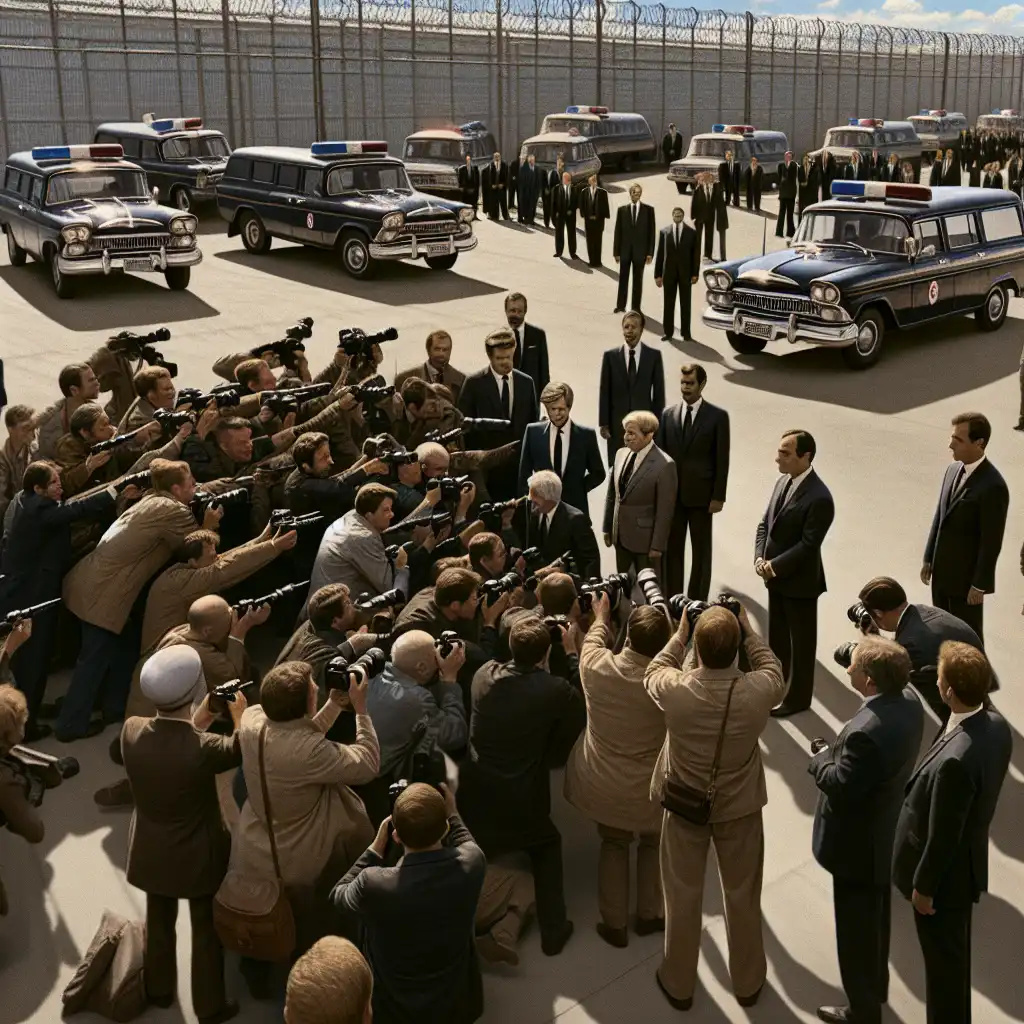The Largest East-West Prisoner Swap in Post-Soviet History: An In-Depth Analysis
The geopolitical landscape between the United States and Russia has seen numerous tense moments, but none as impactful as the recent prisoner swap. This event has not only captured international headlines but also reshaped diplomatic relations between the two nations.
Table of Contents
ToggleBackground of the Prisoner Swap
The swap involves a diverse group of individuals, including journalists, political activists, and alleged spies. One key figure is Wall Street Journal reporter Evan Gershkovich, who has spent over 5½ years in a Russian prison. Despite being a high-profile detainee, Gershkovich’s release came after others who had spent a shorter time behind bars. This swap is the largest of its kind since the dissolution of the Soviet Union, marking a significant turn in East-West relations.
Key Figures in the Swap
Evan Gershkovich: A Journalist Behind Bars
Evan Gershkovich’s detention was a shock to the journalism community and human rights advocates worldwide. He was accused of espionage, a charge he vehemently denied. His case drew widespread condemnation and was seen as a blatant attack on press freedom.
Political Activists and War Opponents
The swap also included veteran political activists and individuals who openly opposed the war in Ukraine. These detainees were seen as political pawns in a larger geopolitical game, their imprisonments often criticized as unjust and politically motivated.
Russians Jailed in the West
Alleged Sleeper Agents
Among the Russians held in Western prisons were alleged sleeper agents who lived double lives. These individuals were accused of espionage, having integrated themselves into Western societies while secretly working for the Russian government.
Cybercriminals and Assassins
Other detainees included those convicted of hacking and cybercrimes, as well as a man involved in a brazen daytime shooting in a Berlin park. These individuals were seen as direct threats to national security, their actions having significant implications for international relations.
The Mechanics of the Swap
Negotiations and Agreements
The negotiations leading up to the swap were complex, involving months of back-and-forth discussions. Both nations had to reach a consensus on the list of prisoners to be exchanged, ensuring that the deal was beneficial for both sides.
Logistical Challenges
The logistics of the swap were equally challenging. Coordinating the transfer of prisoners from multiple locations required meticulous planning and execution. Security was a top priority, given the high-profile nature of many of the detainees.
Implications for Future Diplomatic Relations
A New Era of Diplomacy?
This prisoner swap could signal a new era of diplomacy between the United States and Russia. While tensions remain high, the successful completion of such a significant exchange suggests that both nations are willing to engage in dialogue and negotiation.
Impact on International Law
The swap also has implications for international law, particularly regarding the treatment of political prisoners and journalists. It raises questions about the legality of detaining individuals for political purposes and the need for international oversight.
Frequently Asked Questions
What led to the imprisonment of Evan Gershkovich?
Evan Gershkovich was detained in Russia on charges of espionage, which he and various international organizations have denied. His detention was seen as part of a broader crackdown on press freedom in Russia.
Who are some of the other high-profile detainees involved in the swap?
The swap included a range of individuals, from political activists and war opponents to alleged sleeper agents and cybercriminals. Each detainee had a unique background and set of charges against them.
How did the negotiations for the swap unfold?
The negotiations were complex and involved multiple rounds of discussions between U.S. and Russian officials. Both sides had to agree on the list of prisoners to be exchanged and ensure the deal was mutually beneficial.
What are the potential long-term impacts of this swap on U.S.-Russia relations?
While the swap may ease some tensions, it is unlikely to resolve all the underlying issues between the two nations. However, it does suggest a willingness to engage in dialogue and could pave the way for future diplomatic negotiations.
What legal and ethical issues does this swap raise?
The swap raises significant questions about the treatment of political prisoners and journalists, as well as the legality of detaining individuals for political reasons. It highlights the need for international oversight and adherence to human rights standards.
Conclusion
The largest East-West prisoner swap in post-Soviet history is a landmark event with far-reaching implications. It not only highlights the complexities of international diplomacy but also raises important questions about human rights and the treatment of political prisoners. As the world watches, the hope is that this swap will pave the way for more constructive dialogue and cooperation between the United States and Russia.
















